Anti Inflammatory Meals: Unlock Wellness & Health with these Must-try Options
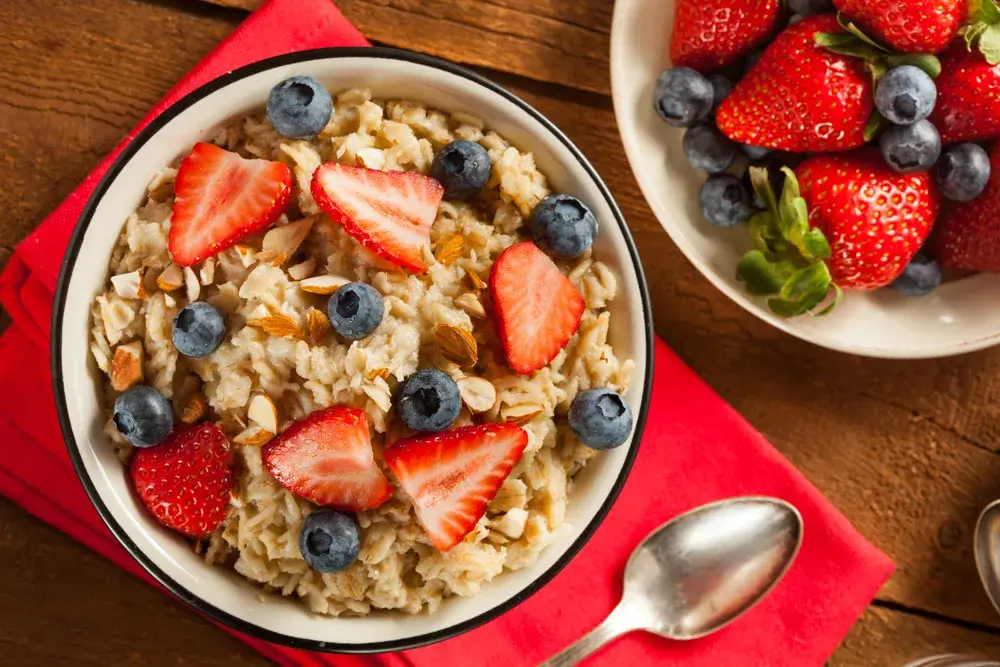
We all agree that most people in the today’s world have adopted sedentry lives and poor diets.
But you can make the right choice. Adopt the anti-inflammatory diet.
Incorporating anti-inflammatory meals into your diet can do wonders for your overall wellness and health. These soothing meals not only provide a delicious eating experience but also help reduce inflammation in the body, supporting a healthier lifestyle.
From hearty stews to flavorful salads, there are a variety of options to choose from that will leave you feeling nourished and satisfied.
Indeed, by utilizing ingredients like dark leafy greens, beets, and cauliflower, these anti-inflammatory meals are packed with essential nutrients that can combat chronic inflammation in the body.
These nutrient-dense foods are known for their powerful antioxidants and anti-inflammatory properties, helping to promote a balanced and revitalized state of well-being.
Whether you’re seeking to reduce inflammation or simply want to incorporate more wholesome meals into your daily routine, these soothing anti-inflammatory recipes will not disappoint.
Say goodbye to bland and boring meals and say hello to flavor-packed dishes that prioritize your health and wellness.
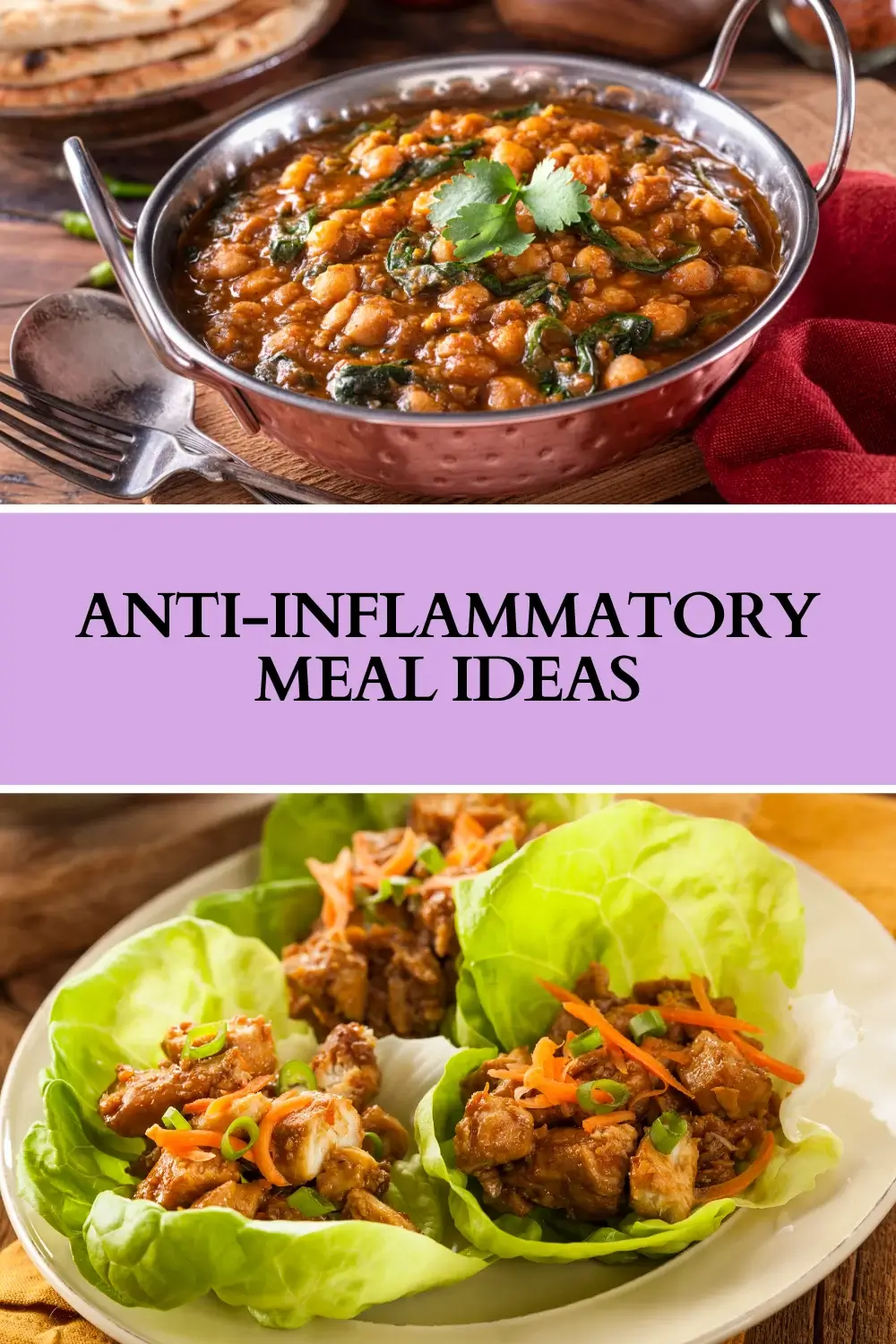
Key Takeaways:
- Anti-inflammatory meals can help reduce inflammation in the body and support overall wellness.
- Incorporating ingredients like dark leafy greens, beets, and cauliflower into your meals can provide essential nutrients that combat chronic inflammation.
- These nutrient-dense meals are packed with antioxidants and promote a balanced and revitalized state of well-being.
- Soothing anti-inflammatory foods offer both delicious flavors and health benefits.
- Make a positive impact on your well-being by enjoying these wholesome and nourishing meals.
Understanding Inflammation and Its Effects on Health
What is inflammation? Inflammation is your body’s natural response to protect itself against harm.
It’s like your body’s own personal defense system, jumping into action whenever it detects something harmful, like an injury or an infection. This process is crucial for healing.
However, not all inflammation is helpful. Depending on how long it sticks around, inflammation can be categorized into two main types: acute and chronic.
Acute vs. Chronic Inflammation
- Acute Inflammation is the good guy in this story. It’s your body’s immediate and temporary response to an injury or illness. Picture this: you get a paper cut, and the area becomes red, warm, maybe even a bit swollen. That’s acute inflammation working to heal the cut. It shows up fast, does its healing job, and then goes away.
- Chronic Inflammation is like an uninvited guest that doesn’t know when to leave. In fact, it’s low-grade and persistent, often simmering in the background without any obvious symptoms. Unlike acute inflammation, which is beneficial and necessary for healing, chronic inflammation can lead to trouble over time.
Common Causes of Chronic Inflammation
Several factors can kickstart and fuel chronic inflammation. Some of the usual suspects include:
- Stress: Yes, the stress from work, relationships, or daily hassles can contribute to chronic inflammation.
- Environmental Factors: Pollution, exposure to toxins like secondhand smoke, or even too much sun can encourage inflammation.
- Diet: This is a big one. Consuming too much sugar, fats, and processed foods can drive inflammation into overdrive.
Health Risks Linked with Chronic Inflammation
When inflammation becomes chronic, it’s like having a slow-burning fire inside your body that can contribute to a host of health issues:
- Heart Disease: Chronic inflammation can lead to the buildup of plaque in your arteries, increasing risk of cardiovascular disease.
- Arthritis: Inflammation can attack joint tissues, leading to pain, stiffness, and swelling.
- Depression: There’s growing evidence that chronic inflammation might have a role in developing depression.
- Certain Cancers: Long-term inflammation has been linked to a higher risk of some cancers.
Understanding the dual nature of inflammation—its protective acute response and potentially harmful chronic state—is crucial. Recognizing the triggers of chronic inflammation, especially the impact of diet, stress, and environmental factors, empowers us to make choices that support our health.
By making informed decisions, we can mitigate the risk of chronic inflammation and its associated health issues, paving the way for a healthier life.
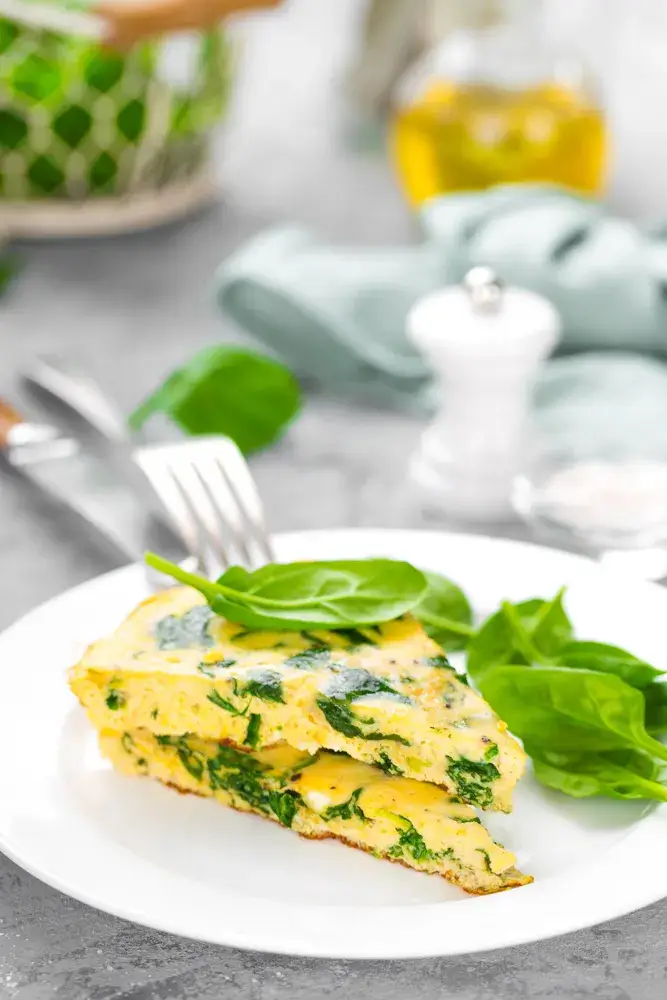
The Anti-Inflammatory Diet: Principles and Benefits
Dive into a way of eating that’s all about choosing foods that nourish and protect your body.
The anti-inflammatory diet isn’t just a fad.
It’s a lifestyle that focuses on whole, nutrient-dense foods to combat inflammation in the body and boost your overall health.
This approach is particularly effective in fighting inflammation and staying healthy, with a strong emphasis on anti-inflammatory foods that offer the best defense against chronic diseases.
Benefits of an Anti-Inflammatory Diet
Choosing an anti-inflammatory eating plan brings a wealth of benefits, backed by science, for maintaining a healthy body and mind. Indeed, by adopting a healthy eating pattern focused on nutrient-dense foods, you can help reduce chronic inflammation in the body. Incorporating ingredients like salmon, avocado, and nuts can provide essential omega-3 fatty acids and healthy fats that promote overall wellness.
- Combat Chronic Diseases: Emphasizing foods rich in antioxidants and anti-inflammatory compounds can significantly lower inflammation and reduce the risk of chronic conditions like type 2 diabetes and cardiovascular disease.
- Enhance Immunity and Heart Health: Foods high in omega-3 fatty acids, such as fatty fish like salmon and sardines, along with nuts and seeds, help keep inflammation under control, supporting a healthy heart and immune system.
- Mood and Energy Boost: A diet rich in whole grains, lean protein, and healthy fats stabilizes blood sugar levels, improving energy and mood throughout the day.
It’s important to note that an anti-inflammatory diet is not a cure for diseases but rather a proactive approach to promoting overall health and wellness.
By choosing whole, unprocessed foods and avoiding inflammatory triggers such as processed meats and sugary drinks, you can create a healthy eating pattern that supports your body’s natural anti-inflammatory processes.
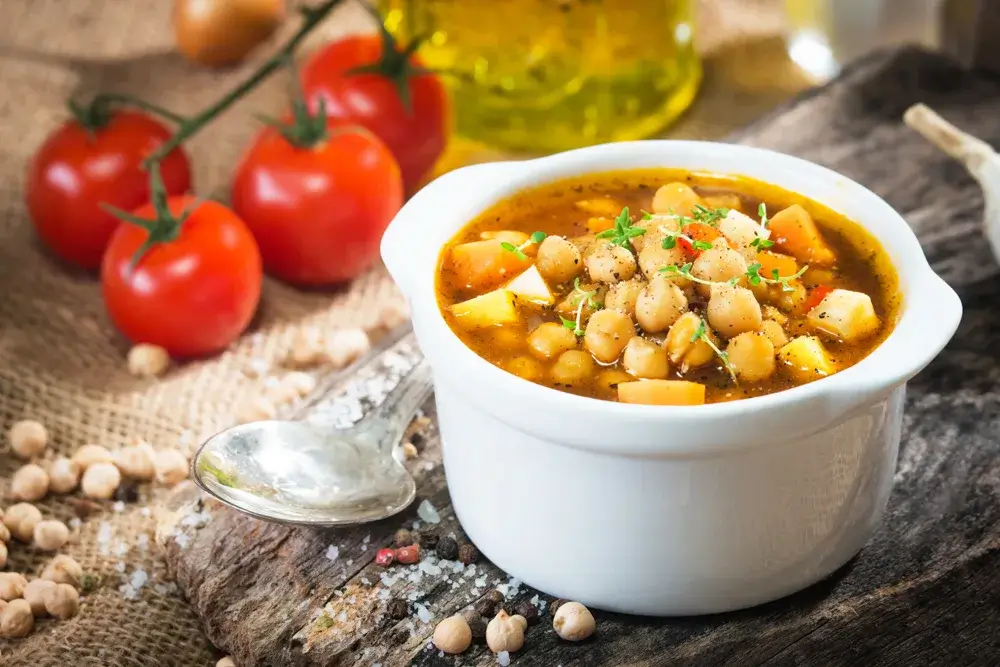
Key Benefits of an Anti-Inflammatory Recipes:
- Reduces inflammation in the body
- Supports cardiovascular health
- Helps manage diabetes
- Enhances brain function
- Strengthens the immune system
By adopting an anti-inflammatory diet, you can take control of your health and reduce inflammation in the body.
Remember to consult with a healthcare professional or registered dietitian before making any significant changes to your diet, as they can provide personalized guidance and recommendations.
Key Components of Anti-Inflammatory Eating
Embrace meal make-over ideas.
Anti-inflammatory meals are centered around nutrient-dense foods that promote overall health.
By incorporating a variety of complex carbohydrates, legumes, and fruits and vegetables, you can create delicious and nourishing anti-inflammatory meals that help combat inflammation and support your well-being.
The Power of Nutrient-Dense Foods
Nutrient-dense foods are packed with vitamins, minerals, and other essential nutrients that provide numerous health benefits. When it comes to anti-inflammatory meals, including nutrient-dense ingredients ensures you’re fueling your body with the necessary nutrients to fight inflammation.
Incorporating Complex Carbohydrates
Complex carbohydrates are an important component of anti-inflammatory meals. Undeniably, these carbohydrates provide sustained energy and are rich in fiber, promoting digestive health and helping to regulate blood sugar levels.
Whole grains, like brown rice, whole wheat, and quinoa, are excellent choices for complex carbohydrates.
The Role of Legumes in Anti-Inflammatory Meals
Legumes, such as lentils and chickpeas, are versatile additions to anti-inflammatory meals. Packed with protein, fiber, and important micronutrients, legumes provide long-lasting energy and help maintain stable blood sugar levels.
They also contain beneficial phytonutrients that help reduce inflammation.
Fruits and Vegetables: Nature’s Antioxidants
Color up your plate. Fruits and vegetables are essential components of anti-inflammatory meals. Dark leafy greens like spinach and kale are particularly rich in natural antioxidants and polyphenols that help combat inflammation. Berries, such as blueberries and strawberries, are also excellent choices due to their anti-inflammatory properties.
Lean Protein
Opt for lean protein.
Incorporating lean protein sources such as chicken, legumes, and plant-based proteins from a vegan diet can help manage inflammation. A chicken salad, for example, becomes one of our favorite healthy recipes when combined with anti-inflammatory herbs and spices.
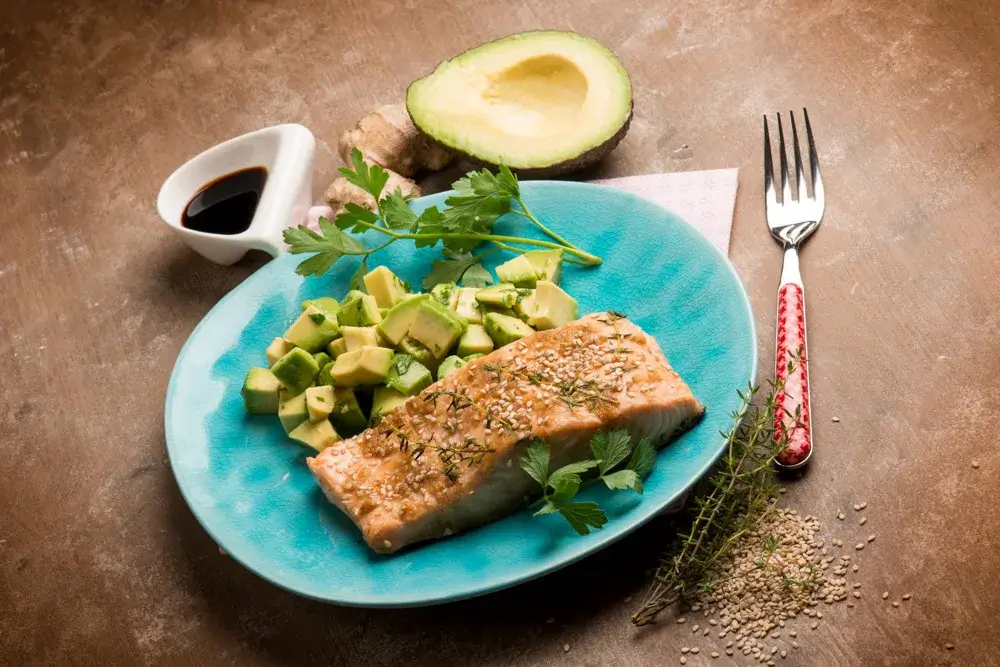
Healthy Fats
Switch to healthy fats.
Avocado, olive oil, and coconut milk offer healthy fats and anti-inflammatory omega-3 fatty acids, crucial for an overall healthy lifestyle and keeping inflammation in check.
Anti-Inflammatory Herbs and Spices
Spice up your food.
Turmeric, ginger, and fennel are loaded with anti-inflammatory properties, making them powerful additions to any dish for an extra anti-inflammatory boost.
By incorporating a variety of nutrient-dense foods, complex carbohydrates, healthy fats, legumes, and fruits and vegetables into your anti-inflammatory meals, you can create a balanced and flavorful eating plan that supports your overall health and well-being.
Inflammatory Foods to Limit or Avoid
Similarly, to maintain a successful anti-inflammatory diet, it’s essential to recognize foods that cause inflammation and can become health risks if consumed regularly. Stay away from these:
- Processed and Fried Foods: Foods high in trans fats and foods with added sugars, such as fried foods and processed snacks, are pro-inflammatory and can increase health risks, including cardiovascular disease and type 2 diabetes.
- Red Meat and Processed Meats: Consuming high amounts of red meat and processed meats can cause inflammation in the body, leading to increased risk of chronic diseases.
- Refined Carbs and Sugary Snacks: Foods like white bread, pastries, and sugary beverages are low in nutrients and high in calories. These foods can spike blood sugar levels, leading to inflammation.
- Certain Oils: Some vegetable oils, like corn and soybean oil, contain omega-6 fatty acids, which, in excess, can contribute to inflammation. Opting for oils with a better balance of omega-3 to omega-6, like olive oil, can help manage inflammation.
Integrating Anti-inflammatory Foods into Your Lifestyle: Practical Tips
Adopting an anti-inflammatory diet may seem daunting at first.
But it’s about making mindful choices that align with a healthy diet and lifestyle.
- Substitute Smartly: One great option is replacing refined grains with whole grains, like swapping white rice for brown rice or quinoa. Opt for whole fruit with fresh flavor instead of sugary desserts.
- Incorporate Variety: Aim to fill half your plate with fruits and vegetables at every meal to ensure you’re getting a wide range of anti-inflammatory nutrients.
- Choose Healthy Fats: Use olive oil for cooking and dressing salads instead of butter or high omega-6 oils. Snack on nuts instead of chips or candy.
- Spice It Up: Moreover, you can experiment with anti-inflammatory herbs and spices to add flavor without the need for extra salt or sugar.
- Seek Professional Advice: If you’re unsure about how to start an anti-inflammatory diet or if you have specific health conditions, consulting with a dietitian can provide personalized guidance tailored to your needs.
By focusing on a diet rich in anti-inflammatory foods, avoiding inflammatory foods, and embracing an overall healthy lifestyle, you can lower inflammation, reduce the risk of chronic diseases, and promote optimal health.
Whether you’re looking to fight inflammation, manage a condition like rheumatoid arthritis, or simply improve your general well-being, an anti-inflammatory diet offers a path to a healthier, more vibrant life.
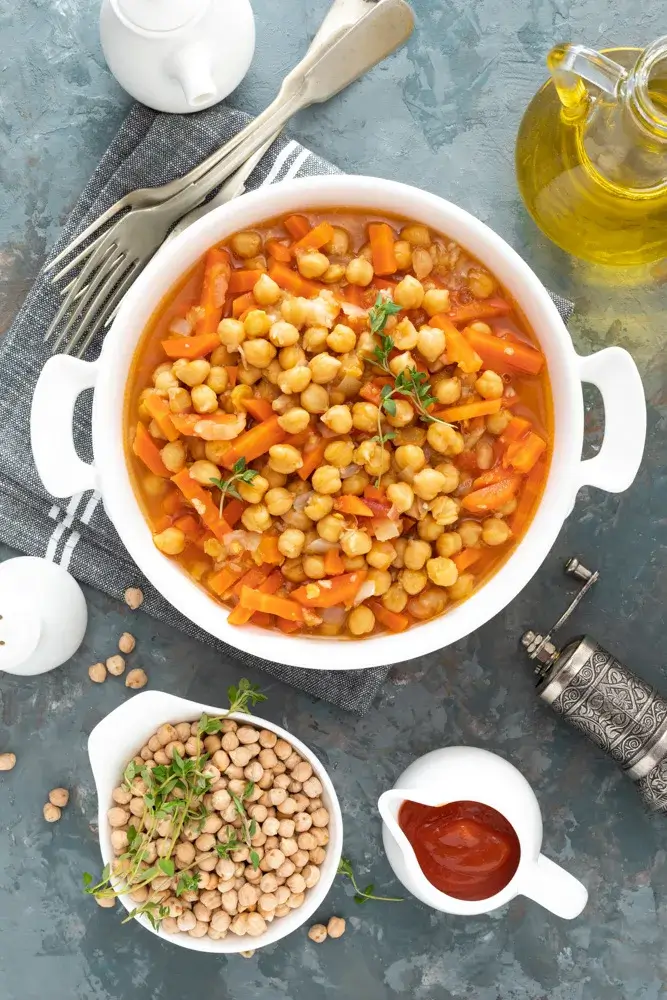
Planning Your Anti-Inflammatory Meals
Eating an anti-inflammatory diet is about more than just avoiding certain foods.
It’s about creating a balanced, nutritious eating plan that helps fight inflammation and keep your body in tip-top shape.
Here’s how to plan your anti-inflammatory meals throughout the day, along with suggestions for incorporating a variety of anti-inflammatory foods and tips for meal prepping and planning ahead.
Creating Balanced, Anti-Inflammatory Meals
A balanced anti-inflammatory meal includes a variety of foods that are rich in antioxidants, omega-3 fatty acids, fiber, and phytonutrients. Here’s what a balanced plate might look like:
- Half your plate filled with colorful fruits and vegetables, like berries, broccoli, and leafy greens, all loaded with vitamins, minerals, and anti-inflammatory compounds.
- A quarter of your plate with whole grains or starchy vegetables, such as quinoa, brown rice, or sweet potatoes, to add fiber and help keep inflammation under control.
- The remaining quarter with lean protein sources, like fatty fish (salmon, sardines) for omega-3s, or plant-based proteins (legumes, nuts) for those on a vegan diet, or merely prefer plant-based food options.
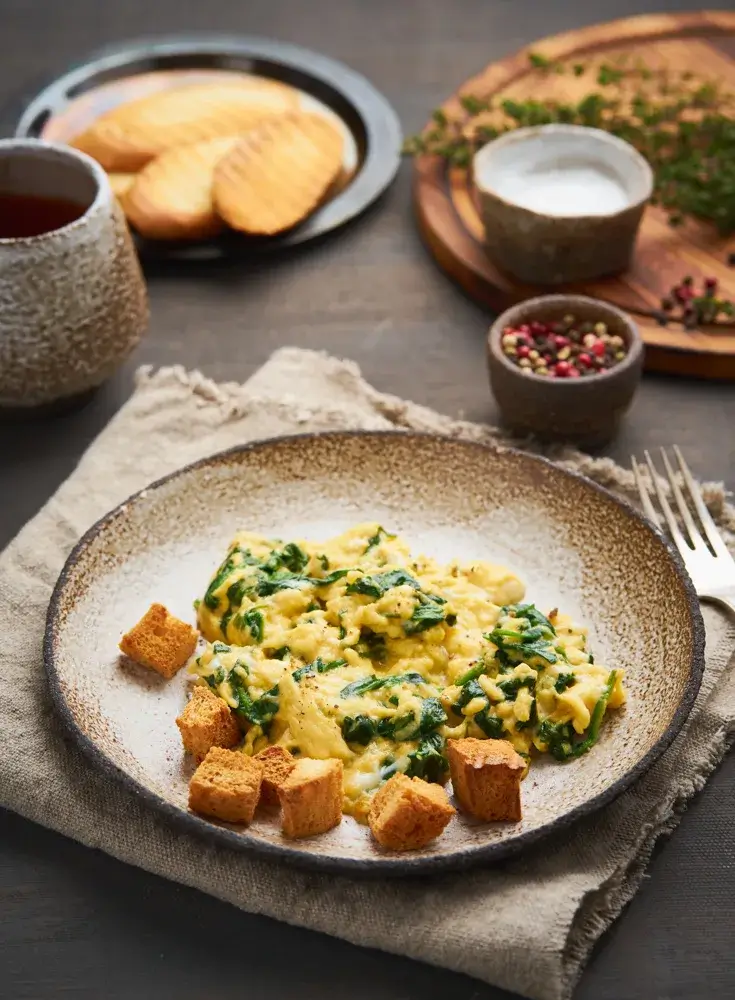
Tips for Meal Prepping and Planning
- Start Small: First, begin by planning just a few meals or snacks in advance. This can make transitioning to an anti-inflammatory diet more manageable.
- Batch Cook: Preparing larger portions of foods can help when embracing an anti-inflammatory diet. For instance, you can batch cook staples like brown rice, quinoa, or roasted vegetables at the beginning of the week. Store them in the fridge for quick, easy-to-assemble meals.
- Embrace Variety: Try new fruits, vegetables, grains, and protein sources regularly to ensure you’re getting a wide range of nutrients and to keep your meals interesting.
- Use Freezer-Friendly Recipes: Make larger batches of anti-inflammatory meals that freeze well, like soups, stews, and casseroles. This ensures you have healthy options on hand when you’re short on time.
- Keep It Simple: Not every meal needs to be a culinary masterpiece. In fact, simple, whole-food ingredients can make delicious, anti-inflammatory meals without a lot of fuss.
Adopting an anti-inflammatory diet and lifestyle doesn’t have to be overwhelming.
With a bit of planning and preparation, you can enjoy delicious, healthful meals that help keep inflammation and health risks at bay. Remember, the goal is overall health and wellness, so be kind to yourself as you make these changes.
Anti-Inflammatory Meal Ideas for Breakfast
Start your day with an anti-inflammatory breakfast to kickstart your wellness journey. Incorporating foods that are known for their anti-inflammatory properties can help reduce inflammation and promote overall health.
Two delicious options to consider are oat porridge and turmeric scrambled eggs.
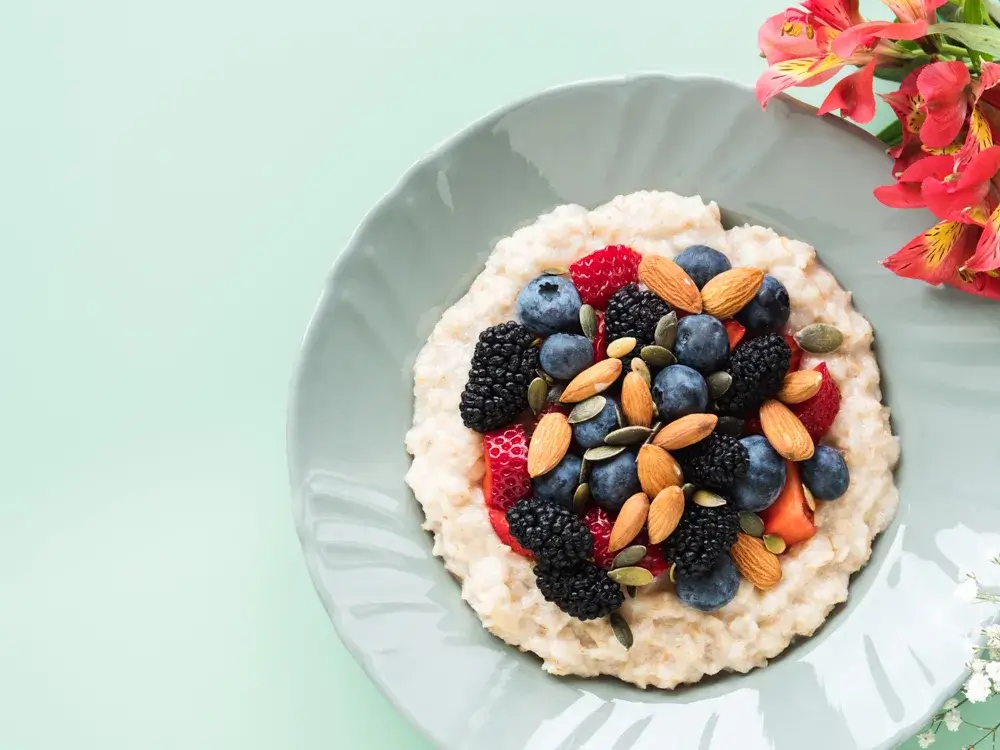
Oat Porridge with Antioxidant-Rich Berries
Begin your day with a hearty bowl of oat porridge, a comforting and nutritious breakfast choice.
Oats are not only rich in fiber but also contain beta-glucan, a type of soluble fiber that helps reduce inflammation in the body.
To add some sweetness and a dose of antioxidants, top your oat porridge with a generous serving of berries such as blueberries, strawberries, or raspberries.
Berries are packed with vitamins, minerals, and antioxidants that can help fight inflammation and keep you feeling energized throughout the day.
Turmeric Scrambled Eggs
Add a vibrant twist to your breakfast routine with turmeric scrambled eggs. Turmeric is a powerful spice known for its anti-inflammatory properties, thanks to its active compound called curcumin.
- Simply whisk turmeric powder into your beaten eggs before scrambling them to infuse the dish with this golden spice.
- Opt to pair your turmeric scrambled eggs with a side of avocado or steamed greens for added nutrition and healthy fats.
Include these anti-inflammatory breakfast options in your meal rotation to start your day off right and support your journey towards better health. Remember to choose high-quality organic ingredients whenever possible for maximum nutritional benefits.
| Benefits of Oat Porridge | Benefits of Turmeric Scrambled Eggs |
|---|---|
| Rich in fiber Contains beta-glucan to reduce inflammation | Turmeric has potent anti-inflammatory properties Eggs are a good source of protein Provides essential nutrients for breakfast |
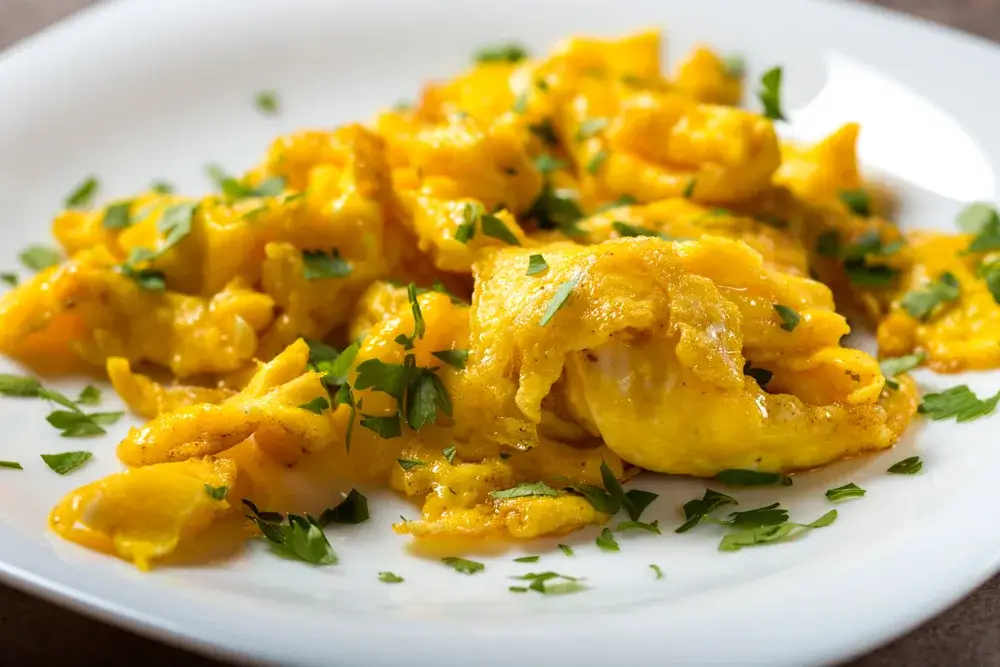
Anti-Inflammatory Meal Ideas for Lunch
Looking for a healthy and delicious anti-inflammatory lunch option?
Try these flavorful meal ideas that are packed with nutrients to support your well-being.
Whether you’re a fan of eggs or prefer plant-based options, there’s something here for everyone.
Spinach and Feta Frittata
This spinach and feta frittata is a delightful combination of leafy greens, creamy feta cheese, and protein-packed eggs. Spinach is rich in vitamins A, C, and K, as well as iron and antioxidants, making it a great anti-inflammatory ingredient.
Not only is this frittata delicious, but it’s also quick and easy to prepare. Serve it with a side of fresh salad greens for a complete and satisfying lunch.
Lentil and Beetroot Salad
This lentil and beetroot salad is a vibrant and nutrient-dense option that combines protein-rich lentils with antioxidant-packed beetroots.
Lentils are a great source of fiber and plant-based protein, while beetroots offer anti-inflammatory properties and are rich in essential nutrients.
Toss them together with a tangy vinaigrette and some fresh herbs for a refreshing and satisfying lunch. You can also add some crumbled feta cheese or toasted walnuts for extra flavor and texture.

Salmon with Avocado Salsa
Ingredients:
- 4 salmon fillets
- 2 tablespoons olive oil
- Salt and pepper to taste
- 1 ripe avocado, diced
- 1/2 red onion, finely chopped
- Juice of 1 lime
- 1 tablespoon chopped cilantro
Instructions:
- Preheat the oven to 375°F (190°C). Place salmon fillets on a baking sheet. Drizzle with olive oil and season with salt and pepper.
- Bake for 15-20 minutes, or until salmon is cooked through.
- While the salmon is baking, combine avocado, red onion, lime juice, and cilantro in a bowl.
- Serve the salmon topped with avocado salsa.
Modifications: For a vegetarian option, replace salmon with grilled tofu or tempeh. Adjust cooking times accordingly.
Incorporating these anti-inflammatory lunch options into your regular meal rotation can help support your overall well-being.
Besides, you can experiment with different ingredients and flavors to find combinations that you enjoy and that align with your dietary preferences.
Remember, nourishing your body with nutrient-dense meals is a key step towards reducing inflammation and promoting optimal health.
Best Anti-Inflammatory Meal Ideas for Dinner
Create a satisfying anti-inflammatory dinner by trying dishes like cauliflower steak paired with beans and tomatoes or lettuce wraps filled with smoked trout and crunchy vegetables.
These dinners incorporate anti-inflammatory ingredients and flavors to provide a delicious and nutritious meal.
Recipe: Smoked Trout Lettuce Wraps
Indulge in a flavorful and anti-inflammatory dinner with these smoked trout lettuce wraps. Here’s what you’ll need:
| Ingredients: | Instructions: |
|---|---|
| 4 large lettuce leaves 8 oz smoked trout fillets, flaked 1/2 cup shredded carrots 1/2 cup thinly sliced cucumber 1/4 cup chopped fresh cilantro 2 tablespoons lime juice 1 tablespoon soy sauce 1 tablespoon honey | Wash and dry the lettuce leaves, then lay them flat. In a bowl, combine the smoked trout, shredded carrots, sliced cucumber, chopped cilantro, lime juice, soy sauce, and honey. Mix well. Divide the trout mixture equally among the lettuce leaves. Roll up the lettuce leaves to form wraps. Serve the smoked trout lettuce wraps as a refreshing and protein-packed dinner option. |
Recipe: Mediterranean Chickpea Stew
For a vegetarian option, Mediterranean chickpea stew
Ingredients:
- 2 tablespoons olive oil
- 1 onion, chopped
- 2 garlic cloves, minced
- 1 teaspoon turmeric
- 1 teaspoon cumin
- 1 can (14 oz) chickpeas, drained and rinsed
- 1 can (14 oz) diced tomatoes
- 1 cup vegetable broth
- 1 zucchini, sliced
- 1 red bell pepper, chopped
- Salt and pepper to taste
- Fresh parsley for garnish
Instructions:
- Heat olive oil in a large pot over medium heat. Add onion and garlic, sauté until soft.
- Stir in turmeric and cumin, cook for 1 minute.
- Add chickpeas, diced tomatoes, and vegetable broth. Bring to a simmer.
- Add zucchini and bell pepper. Cook until the vegetables are tender.
- Season with salt and pepper. Garnish with fresh parsley before serving.
Enjoy these anti-inflammatory dinner recipes packed with flavor and nutrients. They are a great way to support your health and well-being while indulging in delicious meals.

Lifestyle Considerations
It’s not just about diet.
Adopting an anti-inflammatory diet is a significant step toward enhancing your health and controlling inflammation.
Your diet is just one piece of the puzzle.
Other lifestyle factors play an equally crucial role in managing inflammation in the body. Therefore, understanding how exercise, stress management, and sleep impact inflammation can help you create a comprehensive approach to a healthier lifestyle.
Exercise and Physical Activity
Regular physical activity is one of the best ways to combat chronic inflammation.
Indeed, exercise helps improve your body’s anti-inflammatory response and can lower the levels of pro-inflammatory markers. Aim for a mix of cardiovascular exercises, strength training, and flexibility exercises to reap the most benefits. For instance, activities like brisk walking, cycling, yoga, and swimming are excellent choices.
Remember, consistency is key—find activities you enjoy to make regular exercise a part of your daily routine.
Stress Management
Chronic stress can lead to elevated levels of cortisol, a hormone that, when persistently high, can promote inflammation. Incorporating stress-reduction techniques into your life can help keep cortisol levels in check and reduce inflammation.
Practices such as mindfulness meditation, deep breathing exercises, and spending time in nature can significantly lower stress levels. Also, hobbies and activities that bring you joy can be effective in managing stress and enhancing your overall well-being.
Quality Sleep
Sleep and inflammation are closely linked. Poor sleep quality or insufficient sleep can increase inflammation, making it crucial to prioritize good sleep hygiene. Aim for 7-9 hours of quality sleep per night. Establish a regular sleep schedule, create a relaxing bedtime routine, and make your bedroom conducive to sleep by keeping it cool, dark, and quiet. Reducing screen time before bed can also improve sleep quality by minimizing exposure to blue light, which can disrupt your natural sleep-wake cycle.
Consulting with Healthcare Professionals
While adopting an anti-inflammatory lifestyle can significantly improve your health, it’s important to recognize when to seek professional advice.
- If you have chronic health conditions, are experiencing unexplained symptoms, or if you’re not sure how to effectively implement dietary and lifestyle changes, consulting with a healthcare professional or a dietitian can provide you with personalized guidance.
- A dietitian can help tailor an anti-inflammatory eating plan to meet your specific needs, considering any food allergies, intolerances, or nutritional deficiencies you may have. They can also offer advice on meal planning, portion sizes, and how to incorporate anti-inflammatory foods into your diet in a way that’s both effective and enjoyable.
- For individuals with specific health concerns, such as cardiovascular disease, type 2 diabetes, or rheumatoid arthritis, working closely with your healthcare provider is crucial. They can monitor your condition, adjust medications as necessary, and provide support for implementing dietary and lifestyle changes safely.
Embracing an anti-inflammatory lifestyle involves more than just changing what you eat.
It’s about creating a balanced approach that includes regular exercise, effective stress management, quality sleep, and seeking professional guidance when needed. By addressing these key aspects of your lifestyle, you can fight inflammation and stay healthy, enjoying a vibrant and fulfilling life.

Conclusion
Incorporating anti-inflammatory meals into your diet can have a significant impact on your overall wellness and health.
Focus on nutrient-dense foods and avoid processed ingredients to reduce inflammation in your body and support a healthier lifestyle.
Experiment with different recipes and ingredients to find anti-inflammatory meals that you enjoy and that align with your dietary preferences.
Whether it’s a hearty stew packed with dark leafy greens or a flavorful salad filled with antioxidant-rich fruits and vegetables, there are plenty of delicious options to choose from.
Remember, making small changes to your eating habits can make a big difference in reducing inflammation and promoting a sense of well-being.
By incorporating anti-inflammatory meals into your daily routine, you can take a proactive step towards enhancing your overall health.
Start small. They’ll add up over time leading to a healthier you.
FAQ
Why should I incorporate anti-inflammatory meals into my diet?
Incorporating anti-inflammatory meals into your diet can help reduce inflammation and support a healthier lifestyle. Chronic inflammation has been linked to various diseases such as cardiovascular disease, diabetes, and autoimmune disorders. By adopting a healthy eating pattern focused on nutrient-dense foods, you can help reduce chronic inflammation in the body.
What are some key components of anti-inflammatory meals?
Anti-inflammatory meals are centered around nutrient-dense foods that promote overall health. These meals typically include complex carbohydrates, such as whole grains and quinoa, along with legumes like lentils and chickpeas. Fruits and vegetables, especially dark leafy greens and berries, are rich in antioxidants and polyphenols that help combat inflammation.
What are some ideas for anti-inflammatory breakfast meals?
Start your day with an anti-inflammatory breakfast by trying oat porridge topped with antioxidant-rich berries or scrambled eggs infused with turmeric, a powerful anti-inflammatory spice. These breakfast options provide a nutritious and satisfying start to your day while helping to reduce inflammation.
What are some ideas for anti-inflammatory lunch meals?
For a nourishing anti-inflammatory lunch, consider dishes like a spinach and feta frittata packed with leafy greens and protein or a lentil and beetroot salad loaded with fiber and antioxidants. These meals provide a balance of nutrients and flavors to support your health goals.
What are some ideas for anti-inflammatory dinner meals?
Create a satisfying anti-inflammatory dinner by trying dishes like cauliflower steak paired with beans and tomatoes, or lettuce wraps filled with smoked trout and crunchy vegetables. These dinners incorporate anti-inflammatory ingredients and flavors to provide a delicious and nutritious meal.